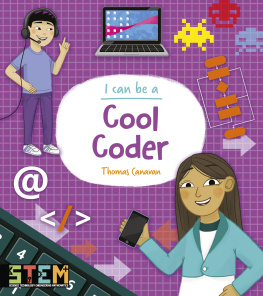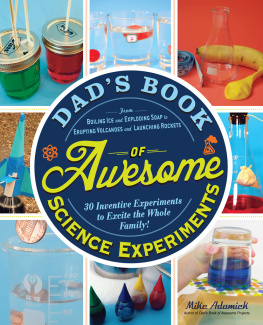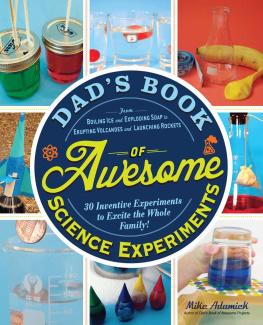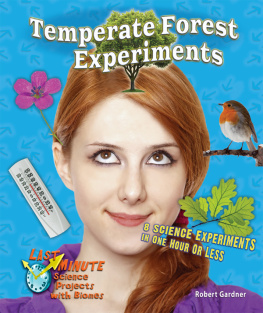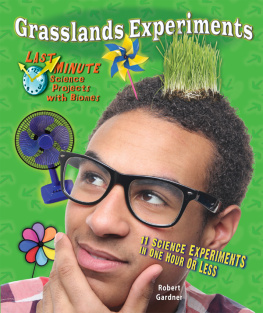
Having Fun and Being Safe
Inside this book youll find a whole range of exciting science experiments that can be performed safely at home. Nearly all the equipment you need will be found around your own house. Anything that you dont have at home should be available at a local shop.
We have given some recommendations alongside the instructions to let you know when adult help might be needed. However, the degree of adult supervision will vary, depending on the age of the child and the experiment. We would recommend close adult supervision for any experiment involving cooking equipment, sharp implements, electrical equipment or batteries.
The author and publisher cannot take responsibility for any injury, damage or mess that might occur as a result of attempting the experiments in this book. Always tell an adult before you perform any experiments, and follow the instructions carefully.
Forces
Whether youre lifting books with your breath or examining Moon-like craters in a baking tray, youll be able to demonstrate how scientific forces lie behind just about everything!

Launch your very own rocket ()!
Some Light Reading
A pile of textbooks is pretty heavy to carry around, isnt it? But can you imagine being able to lift that same pile using just your breath? It seems easy enough to lift a sheet of paper or a feather with just your breath, but something as heavy as a stack of books? Is there a scientific trick waiting to be learned?
YOU WILL NEED
- 3 hardbound books (about 200 pages each)
- Masking tape
- Plastic drinking straw
- A small plastic carrier bag
- Table

Tape the handle and open end of the bag shut, leaving just enough space to slide a straw inside it.

Place the bag close to the edge of the table, with the taped end facing you.

Pile the books on the bag.
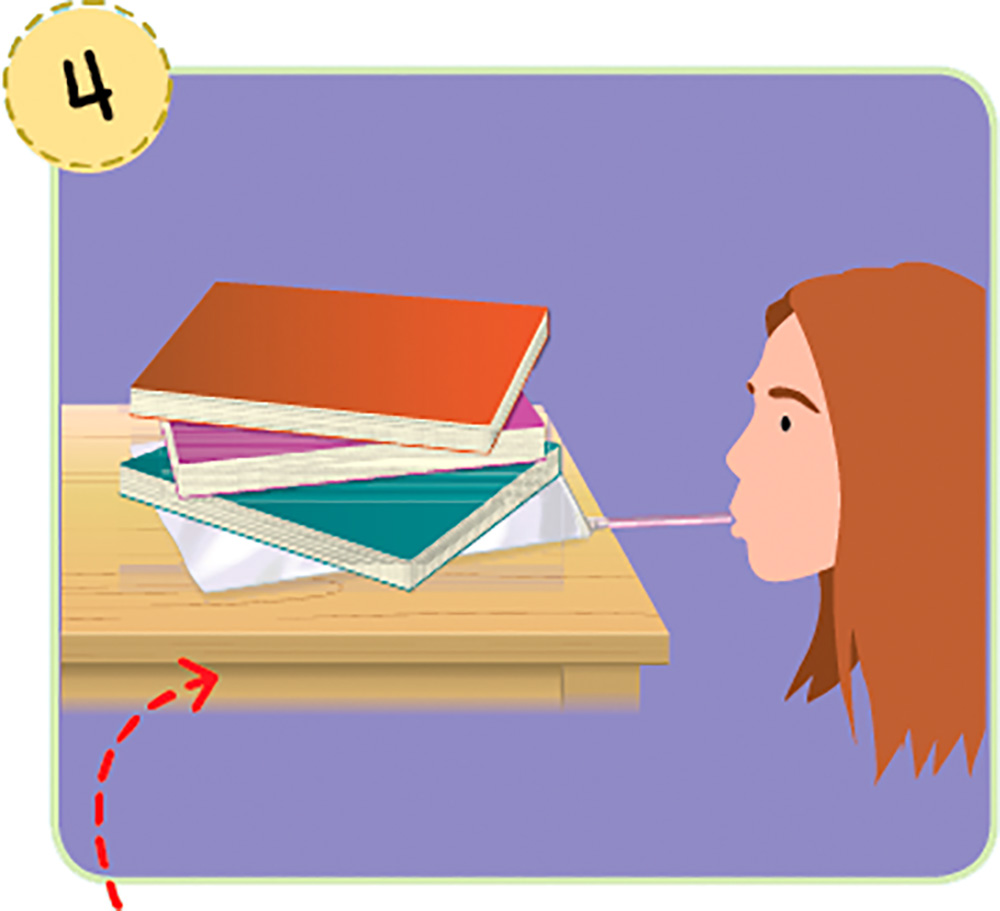
Slide the straw into the gap in the bag and blow into it. The bag will begin to inflate and lift the books.
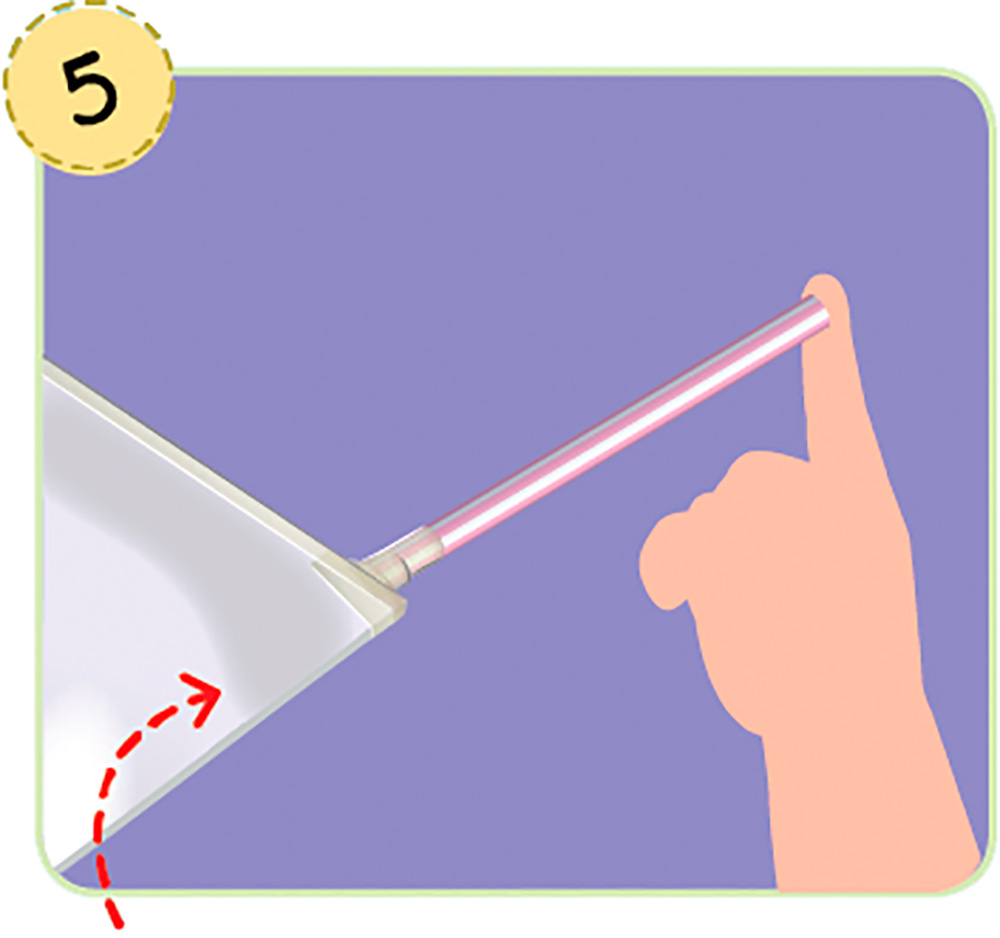
Stop to catch your breath, blocking the end of the straw to stop air from escaping.
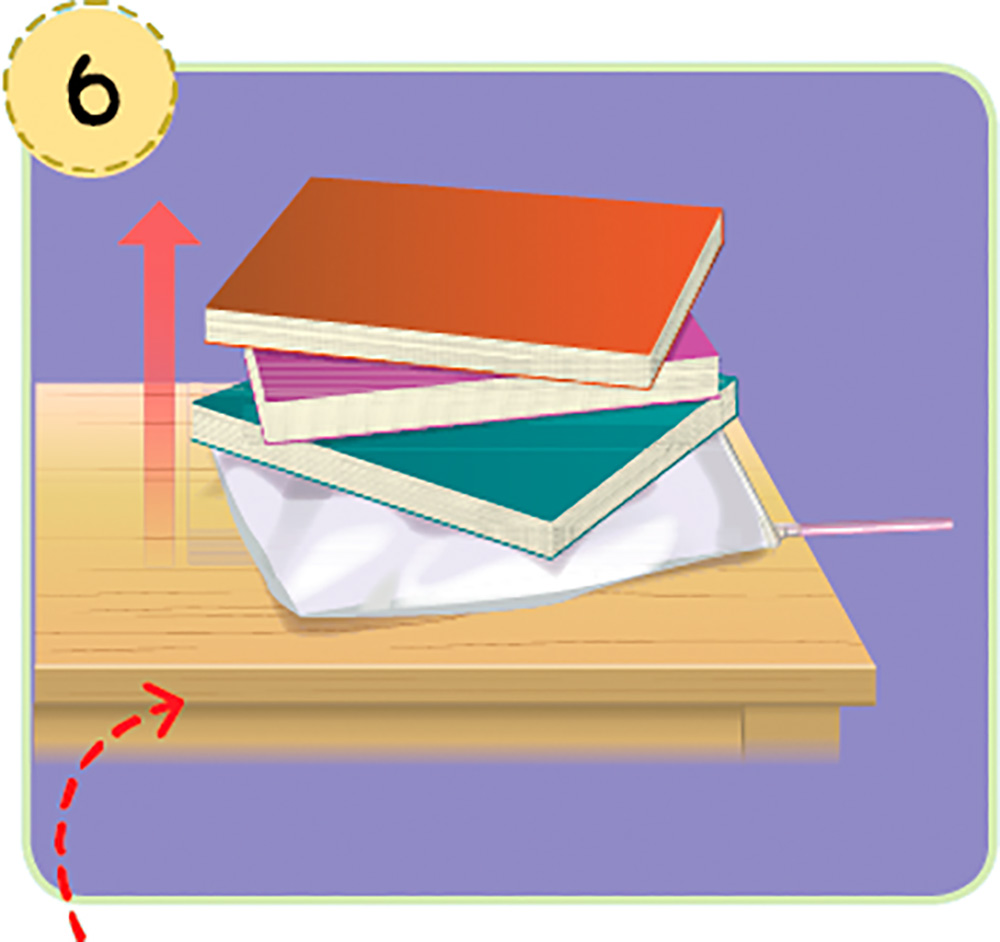
Continue inflating the bag until the books have risen 23 cm.
HOW DOES IT WORK?
Youve just demonstrated Pascals Law, first noted by French scientist Blaise Pascal in the seventeenth century. It deals with fluids, the term that scientists use to describe both liquids and gases. The law describes what happens if an outside force (in this case, your breath) is applied to an enclosed fluid (the air inside the bag). The force is transmitted equally throughout the fluid. You might think that your breath is a small force, but it is pressing equally all across the bag. That multiplied force then becomes strong enough to lift the books.
TOP TIP!
Make sure that the straw fits snugly inside the opening of the bag, with no gaps. You might even find it easier to slide the straw in first and then tape the end of the bag shut.
WHAT HAPPENS IF...?
Maybe youve done a variation of this experiment in reverse. If you poke a blown-up balloon, youll see it bulge out in all directions. Thats because the force of your fingers pressure has been spread equally through the air inside the balloon. With enough force, it will burst.
REAL-LIFE SCIENCE
Have you ever seen a car lifted high up, so that a mechanic can work on its underside? It rises on a hydraulic jack. The jack that lifted the car worked on the same principle as your inflating bag except that it was liquid (not air) receiving the extra force.

Last Man Standing
Someone whos easy to beat in a game is called a pushover. Heres a chance to use some science to decide which of three similar cartons is the real pushover. You might be surprised at the result!
YOU WILL NEED
- 3 empty fruit juice cartons (1 litre size) with screw-on caps
- Water
- Felt-tip pen
- Table o Measuring stick or long ruler
- Note pad

Fill one carton with water, screw the cap back on and mark it Full.

Half-fill a second, replace the cap and mark it Half.
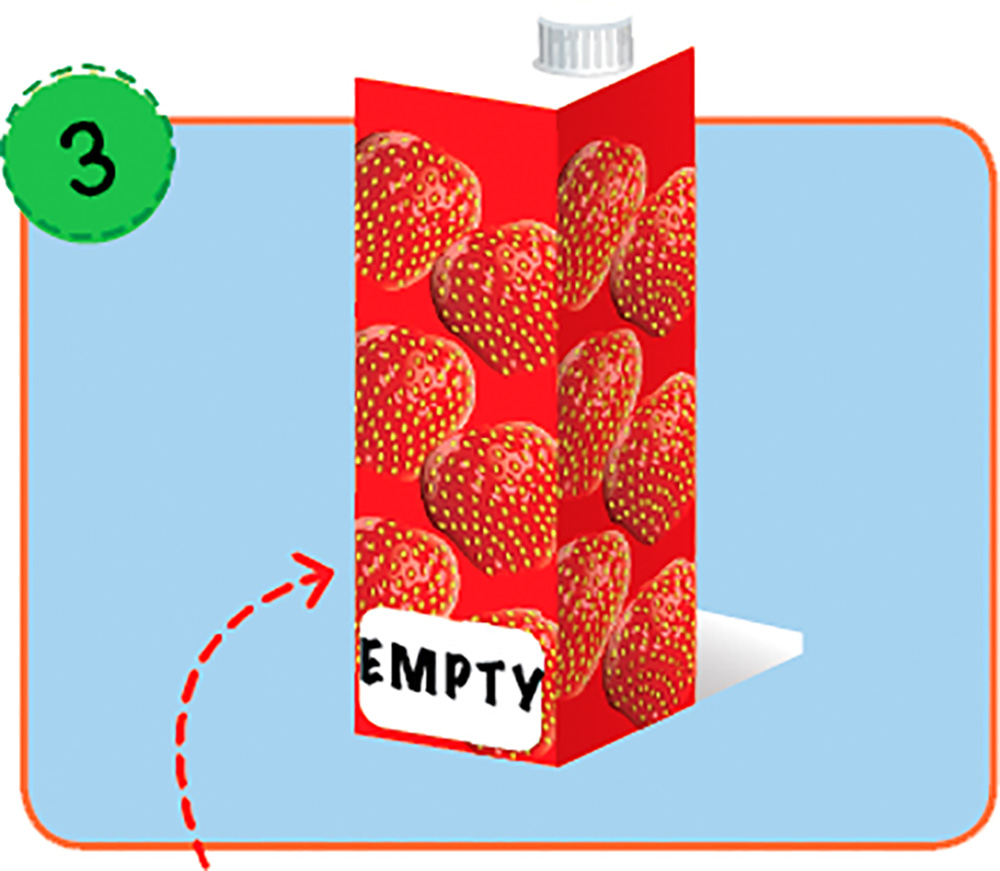
Screw the cap back on to the third carton and mark it Empty.
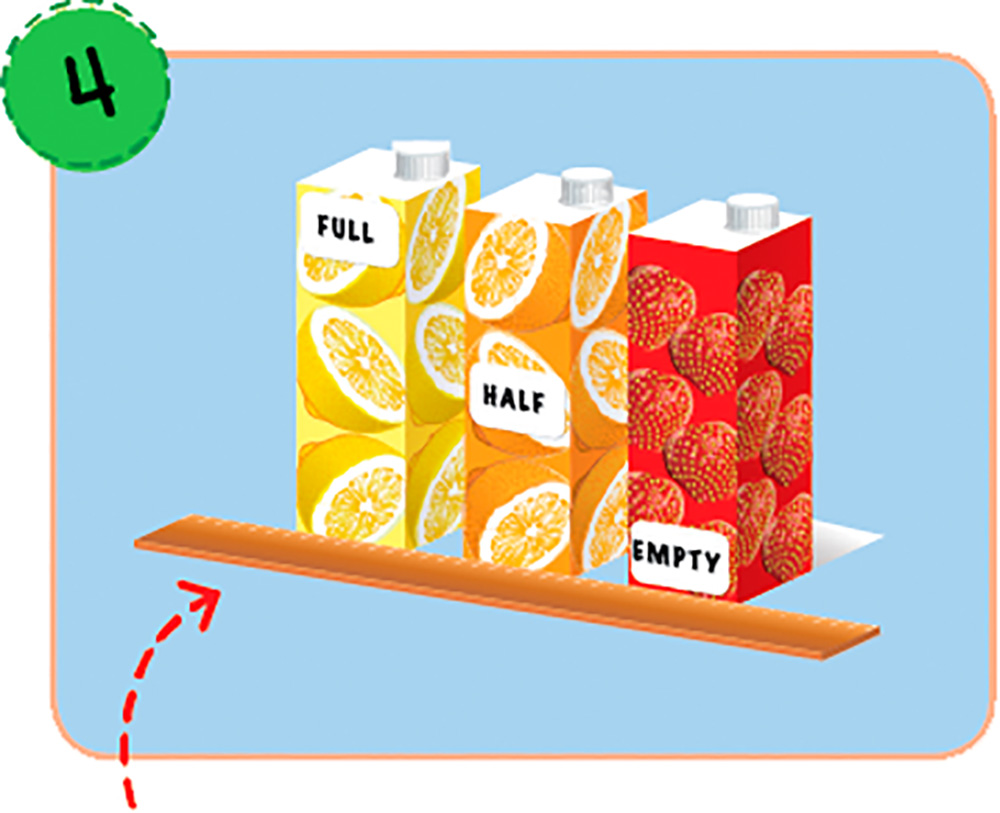
Use the measuring stick to line all three straight alongside each other on the table. Stop to consider and predict which of the three cartons is most stable.
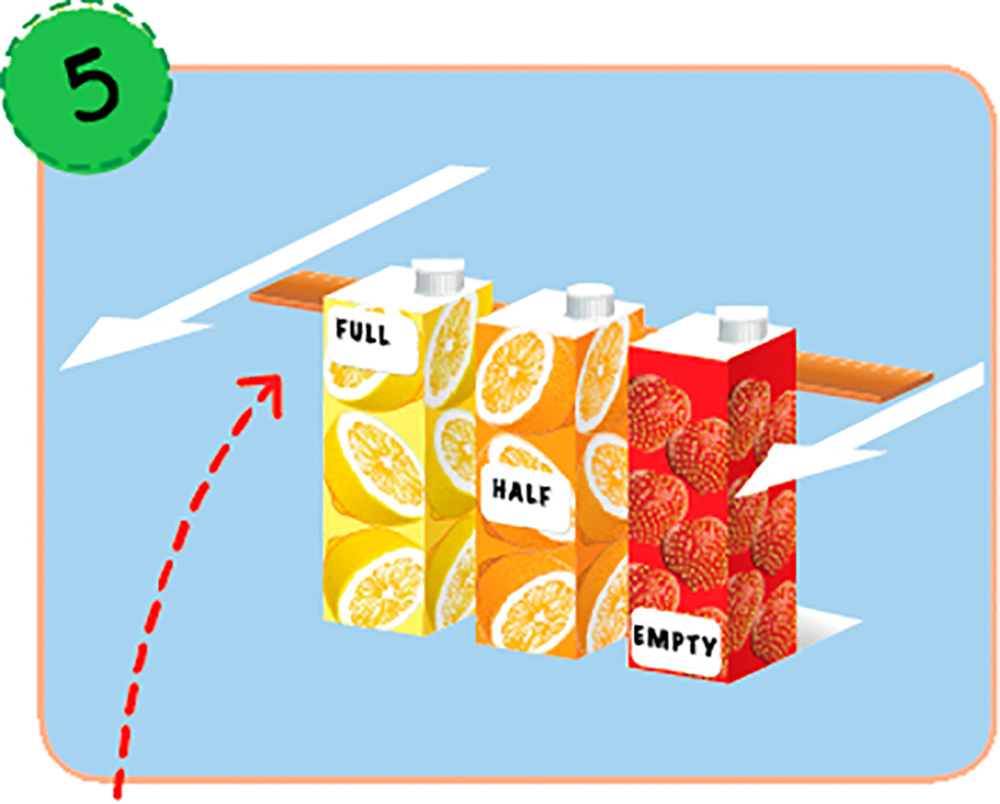
Line the measuring stick behind the three cartons, touching them lightly about 3 cm down from the top.
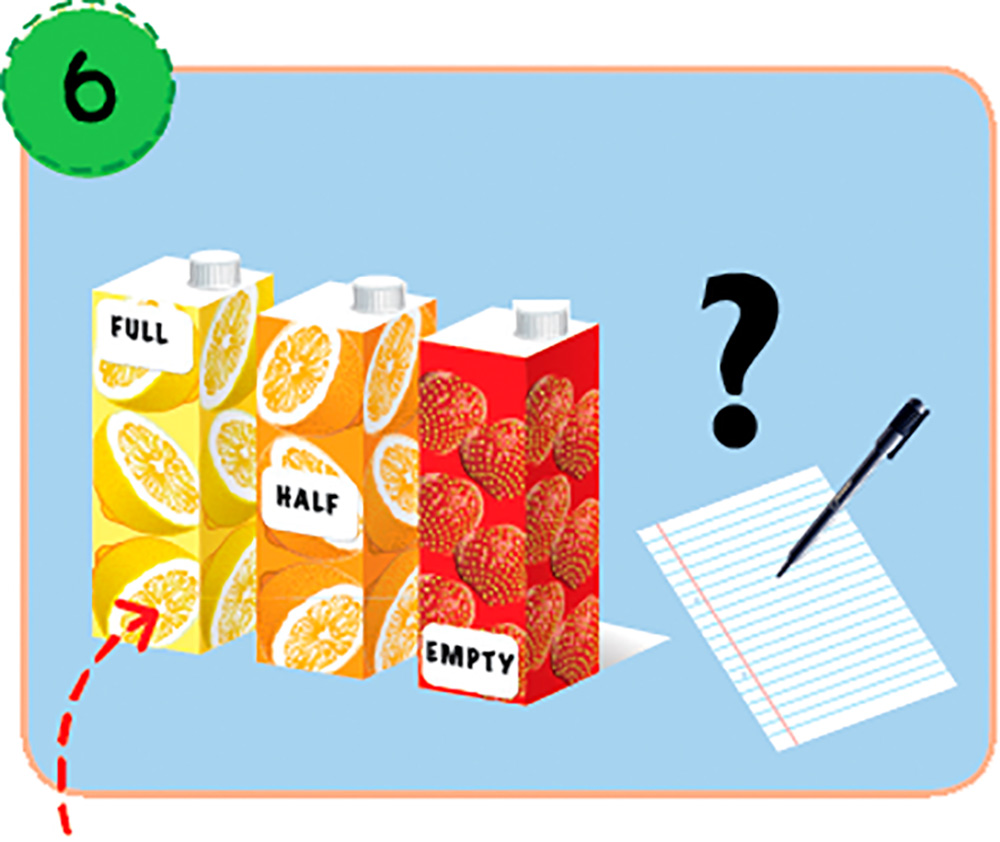
Push the stick forwards very slowly and observe which of the cartons is the first, second and third to fall.
HOW DOES IT WORK?
This experiment is all about centre of mass the point in any object that represents the average location of its mass. You can imagine all of the objects mass being concentrated at that point. In practical terms, the centre of mass determines how stable an object is. If it remains above the objects base of support (like the base of the cartons), then the object remains stable. The centre of mass of the full and empty cartons was about halfway up the carton. But the half-full cartons centre of mass was in the lower half because the top half (air) had less mass.
TOP TIP!


